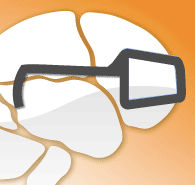 It goes without saying that mainstream thinking about neurofeedback to date has been mistaken. The original attempts at replication of Kamiya’s work on alpha training for anxiety were misguided in their methodology and in their conclusions. The rejection of Sterman’s and Lubar’s collective body of work was a blunder of the first magnitude. The continued dismissal of the claims of neurofeedback in the face of mounting evidence is indefensible. On the other hand, nothing here really surprises. A paradigm shift of such magnitude will be resisted by the mainstream on all fours. Everything has gone true to the historical pattern with respect to scientific revolutions.
It goes without saying that mainstream thinking about neurofeedback to date has been mistaken. The original attempts at replication of Kamiya’s work on alpha training for anxiety were misguided in their methodology and in their conclusions. The rejection of Sterman’s and Lubar’s collective body of work was a blunder of the first magnitude. The continued dismissal of the claims of neurofeedback in the face of mounting evidence is indefensible. On the other hand, nothing here really surprises. A paradigm shift of such magnitude will be resisted by the mainstream on all fours. Everything has gone true to the historical pattern with respect to scientific revolutions.
Archive for the ‘Application of Neurofeedback’ Category
The Great Divergence
Thursday, August 6th, 2009The Crisis in Health Care
Wednesday, July 29th, 2009 When health care was last dealt with in 1993, a reform proposal was sent to Congress that promised to restructure health care. But the existing interest groups managed to kill the proposal. Now that all of the stake holders are at the table in the latest effort to reform health care, it is guaranteed that nothing radically new will make its way into the final bill. Only incremental fixes will be tolerated, and only under condition that the existing interest groups will not be harmed. Yes, it is heart-warming that the AMA, big PhRMA, and the insurance industry are all on board with the reform effort, but that also means that the outcome will be well within their comfort zone.
When health care was last dealt with in 1993, a reform proposal was sent to Congress that promised to restructure health care. But the existing interest groups managed to kill the proposal. Now that all of the stake holders are at the table in the latest effort to reform health care, it is guaranteed that nothing radically new will make its way into the final bill. Only incremental fixes will be tolerated, and only under condition that the existing interest groups will not be harmed. Yes, it is heart-warming that the AMA, big PhRMA, and the insurance industry are all on board with the reform effort, but that also means that the outcome will be well within their comfort zone.
Even the proposal to complement the insurance-based system with a government plan is seen as a program-stopper. When it comes right down to it, the insurance companies really don’t want to compete against the government-run system, and it’s clearly not because governments can’t run health care. They are doing so everywhere else in the civilized world, and doing it more cheaply and better than we are. Our government is also doing it in Medicare, and it’s doing a darn good job of it under the current constraints. If the current insurance-based system is to remain the model, why don’t we ask, just for the sake of argument, what would happen if we have them take over education as well.
Neurofeedback for the Aging Brain
Wednesday, July 29th, 2009 The near-win of Tom Watson at the British Open Golf Tournament at the age of 59 gives us the impetus to address the issue of healthy aging. Everywhere the elderly are sticking around, in careers, in positions of power, and even in sports where youthful eyeballs, strength, and stamina confer an advantage. The present concern about the looming health care crisis, however, focuses us ever on the other part of the spectrum, the gradually deteriorating health status of the elderly. Our present system of health care seems to do well at keeping people alive, but often with very little quality of life. With an ever growing contingent of the elderly, the costs keep creeping up, but the return on our societal investment keeps diminishing. The movement toward healthy aging not only promises to increase the return on that investment, but it also gives hope of making inroads into the cost of health maintenance itself. Read on.
The near-win of Tom Watson at the British Open Golf Tournament at the age of 59 gives us the impetus to address the issue of healthy aging. Everywhere the elderly are sticking around, in careers, in positions of power, and even in sports where youthful eyeballs, strength, and stamina confer an advantage. The present concern about the looming health care crisis, however, focuses us ever on the other part of the spectrum, the gradually deteriorating health status of the elderly. Our present system of health care seems to do well at keeping people alive, but often with very little quality of life. With an ever growing contingent of the elderly, the costs keep creeping up, but the return on our societal investment keeps diminishing. The movement toward healthy aging not only promises to increase the return on that investment, but it also gives hope of making inroads into the cost of health maintenance itself. Read on.
In our current orientation in medicine, the tendency is to regard certain symptoms as a natural part of aging and then to adopt a policy of “watchful waiting,” particularly when we don’t have a ready remedy in any event. The same passivity, however, afflicts the research community. As the cartoon says, “Not only is there no cure, but there isn’t even a race for a cure.” This might be defensible if it weren’t for the fact that ignoring some issues just sets the table for worse to come. Further, some emerging health problems are quite optional, as we shall see.
The Virtual Economy
Wednesday, April 29th, 2009 Some years ago the parent of an ADHD child we had trained told us, “I would have given my house for what you have done for my child.” Nowadays such sentiments are more likely to be expressed by parents of autistic children. Not every person who pays for our services feels this way, but clearly a lot of people recognize that the value of neurofeedback bears no relationship to its costs. There’s no way to put a dollar value on the recovery of function in traumatic brain injury, dementia, or psychological trauma, or in the case of developmental delay.
Some years ago the parent of an ADHD child we had trained told us, “I would have given my house for what you have done for my child.” Nowadays such sentiments are more likely to be expressed by parents of autistic children. Not every person who pays for our services feels this way, but clearly a lot of people recognize that the value of neurofeedback bears no relationship to its costs. There’s no way to put a dollar value on the recovery of function in traumatic brain injury, dementia, or psychological trauma, or in the case of developmental delay.
This presents no problem to the economist who sees the price of an item as giving us the best measure of what it is actually worth. But we do have a problem in the economic modeling of health care precisely because perceived value is so out of line with costs. This is true across the board, and most particularly when it comes to life-saving medical interventions, or procedures that extend our useful lives further into the future. There’s almost no limit to what most individuals would wish to have done in order to recover function, and to extend useful life expectancy. What would Howard Hughes, for example, have been willing to do for his obsessive-compulsive condition? (If only he had had neurofeedback!)
Can one put this in terms that an economist can work with? The mother at the beginning of this tale saw the value to her child as equal to the value of her house, which probably constitutes the bulk of her assets. All of our tangible assets taken together probably amount to some five to ten times our annual GNP, give or take a housing and stock market bubble. So even if most people would be willing to pony up only some ten percent of their assets to assure the desired outcome of a critical medical or rehabilitative procedure, the total value still comes to something comparable to our whole GNP. One could go on to construct a wholly different GNP based not on actual prices but rather on perceived value of what the economy actually produces. Let’s call this a virtual GNP, on the basis of which one could envision a virtual economy of the future in which such value judgments would have a greater policy impact. We can see how that might go in the case of health care:
A Timely Observation on Our Economic Status
Friday, March 13th, 2009 Several disjoint pieces of information have been intruding on my consciousness for some while. At last year’s NBA finals, a courtside seat at Staples Center went for more than $27,000. That was for a single game. At about the same time, I noticed an ad informing readers that the 99cent store also had a bridal registry. These nuggets nicely encapsulate the two economic realms that coexist in our nation, particularly in our cities. The pattern is replicated abroad. In the world at large, there are enough cell phones for two-thirds of the world’s population, while the remaining one-third lives on less than $2 per day. When it comes to meeting basic survival needs, the amounts required are modest indeed, even in our society.
Several disjoint pieces of information have been intruding on my consciousness for some while. At last year’s NBA finals, a courtside seat at Staples Center went for more than $27,000. That was for a single game. At about the same time, I noticed an ad informing readers that the 99cent store also had a bridal registry. These nuggets nicely encapsulate the two economic realms that coexist in our nation, particularly in our cities. The pattern is replicated abroad. In the world at large, there are enough cell phones for two-thirds of the world’s population, while the remaining one-third lives on less than $2 per day. When it comes to meeting basic survival needs, the amounts required are modest indeed, even in our society.
There are several implications. First of all, the economy we have is largely discretionary. Secondly, if the people at the bottom lose their livelihood, this can get lost in the economic aggregates. We cannot look to the aggregate economic pulse as an index to suffering. We have to look for it directly. The signposts are everywhere. A car’s windshield is smashed to yield an old iPod that is worth perhaps $30 on the street. A man slashes all the tires in a parking lot–no doubt the signature of seething resentments. A father kills himself and his family because of a $6,000 debt that he cannot cover.
The Fed is projecting on the order of 1.2% decline in economic aggregates for the year. Of course Fed projections are really lagging indicators. It does not want to be harbinger of bad news. But even if things turn out to be even three to six times worse, somehow that does not seem sufficient to put our society into crisis. The real crisis in fact lies elsewhere. At the bottom end, we have people falling out of the cash economy into penury. At the top end, we have the collapse of asset valuations. And in the middle we have a lot of stress and angst.

Wired to Heal with Neurofeedback
Thursday, July 16th, 2009Hosted by Andrea R. Garrison
This interview is approximately 2.5 hours in length.
To listen to this interview:
Click on the image of the multimedia player below to be taken to the blogtalkradio.com website.
Posted in ADD / ADHD, Application of Neurofeedback, Clinical Methods, Commentary, Efficacy, Neurofeedback, Scientific | No Comments »